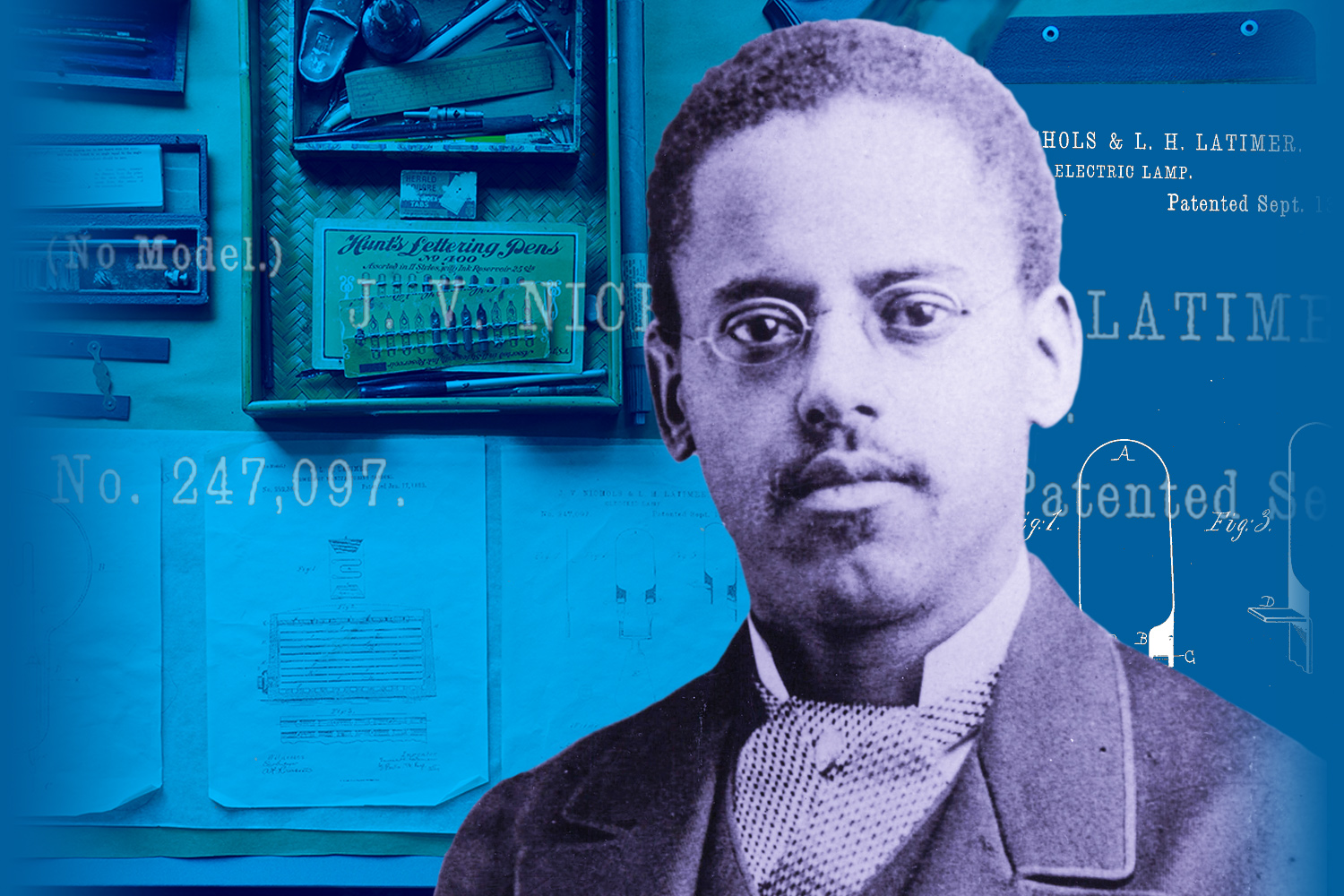
Bringing light for all
A Black American inventor known best for improving a carbon filament for the incandescent light bulb, Lewis Latimer used his childhood experiences, military training, and innovative mindset to fight back against the racist beliefs of the time and leave a lasting positive change in the world.
15 min read
Each month, our Journeys of Innovation series tells the stories of inventors or entrepreneurs who have made a positive difference in the world. This month, Bill Lincicome's story focuses on Lewis Latimer, who was best known for improving the carbon filament for the incandescent light bulb.
Do you know an innovator or entrepreneur with an interesting story?
The clip-clop of horseshoes and the slow creaking of carriage wheels on the tarmacadam streets of London welcomed the two weary American travelers after more than one month at sea on New Year’s Day, 1882. Accompanied by his wife, 33-year-old Lewis Latimer arrived with a daunting task before him: the electrified illumination of a city famous for its fog.
The Maxim-Weston Electric Light Company had recently acquired a factory to produce incandescent light bulbs, and Latimer, an inventor and electricity expert, was to teach the production process to its workers.
Traveling to the factory—located off the Thames at Bankside—he arrived to find it in dilapidated condition: Copper wires strewn about the factory floor; windows covered thick with dirt as to not allow light to penetrate; rust patches on the milling machine, the result of rainwater from a leaky roof.
While the factory conditions presented challenges, it was the collective mentality of the workers that cast the darkest shadow during Latimer’s time in the United Kingdom’s capital city.
In the nine months he spent on this assignment, it became clear that many workers Latimer was charged with training resented having a Black man supervise their work. He wrote that he was “in hot water from the first moment to the end.”
Latimer would encounter similar treatment throughout North America and England in the 1880s as he brought light to millions from New York and Philadelphia to Montreal and London.
Even though his endeavors shined light in dark places, Latimer was often met with hostility throughout his travels from those stuck in the cold, pervasive racist beliefs of the time. Undeterred, he would use his childhood experiences, military training, and innovative spirit to leave an indelible mark on the world, both in delivering the tangible benefits of electricity and in his advocacy for increased educational and occupational opportunities for Black people.
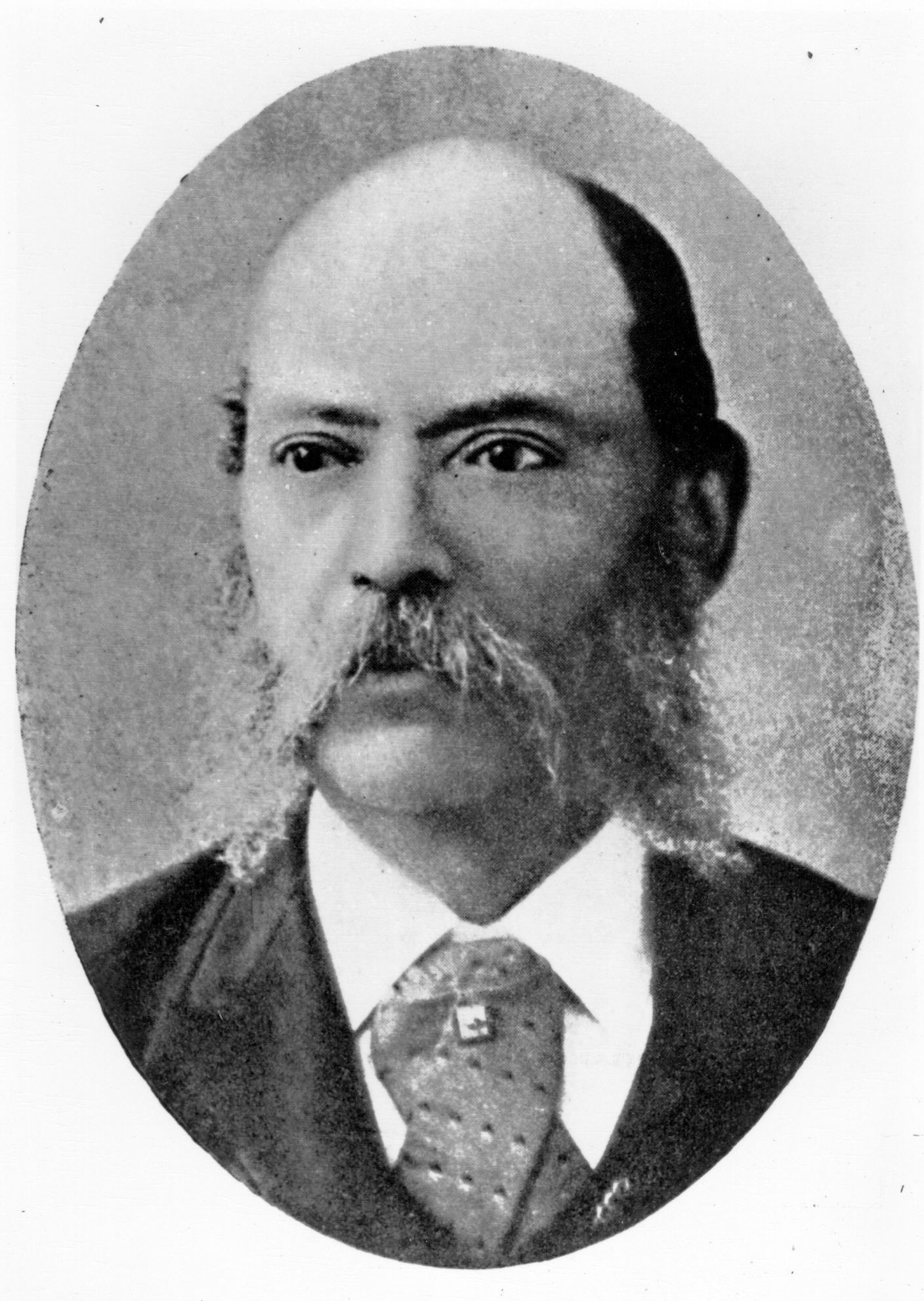
George Latimer, Lewis’s father, escaped enslavement from Virginia to Boston with his wife in 1842. Lewis had to drop out of school at age 9 to support his family when his father disappeared in 1857.
(Courtesy of the Lewis Latimer House Museum)
Lewis Howard Latimer was born on September 4, 1848, in Chelsea, Massachusetts, only a few miles outside of Boston. He was the youngest of George and Rebecca’s four children. Although he was born in a state where slavery was illegal, Latimer and his family still lived in the peculiar institution’s shadow. His parents had escaped enslavement in Virginia in 1842, and made it to Boston, where they thought they would be safe.
It wouldn’t be so.
Days after their arrival in the city, George Latimer was recognized by an associate of his enslaver and captured. As enslaved people were considered property by law at this time, George was charged with larceny—the act of stealing himself. The notoriety of the case forced Rebecca—who was pregnant with the couple’s first child—into hiding, staying with abolitionist friends throughout George’s ordeal. With the trial attracting considerable public attention, including that of famed abolitionists Frederick Douglass and William Lloyd Garrison and a Black minister paying $400 to George's enslaver for his freedom, George was eventually released from custody. The Latimer family settled in Chelsea.
Unfortunately, their troubles were not over.
Fifteen years later, George Latimer disappeared, upending the family’s stability once again. Left without adequate income to support her children, Rebecca made the painful decision to split up her family. Lewis’s two older brothers, George and William, were sent to a state-run farm school, which placed them into jobs as a farm laborer and a hotel worker, respectively. Their sister, Margaret, was sent to live with family friends. As the youngest, Lewis remained at home.
Possessing only a grade school education, Lewis spent his early teen years working odd jobs to help support his family.
By 1864, the nation was three years into the Civil War. With African Americans now permitted to enlist in the United States military, Latimer wished to serve. The problem? He was too young. Then 16-year-old Latimer solved this problem the same way many young men did during the conflict — he falsified his age and enlisted in the U.S. Navy. Latimer served as a cabin steward aboard the USS Massasoit, a “double-ender” steam gunboat that served as a patrol boat from the New England coast to the Carolinas and engaged with Confederate forces on the James River in Virginia.
Despite their willingness to serve their country and help secure the freedoms of all Americans, Latimer and other Black sailors were often restricted to military occupations such as stewards, cooks, or other lower-paid positions. Although the struggles of wartime service — compounded on account of his skin color — were ever-present, Latimer's naval enlistment set him on a trajectory that would shape his life.
In his studies of Latimer’s life, Hugh Price, chair of the board of the Lewis Latimer House Museum in New York, said Latimer’s exposure to complex machinery and a hierarchical organization during the war sparked an early interest in how both operate.
“In addition to being bright [and] naturally savvy, I think he had a capacity to understand hierarchical systems, how they function, how you get ahead,” said Price, who is also Latimer’s great-grandnephew. “I think maybe because of his service on that ship, he became very interested in how mechanical things work.”
Although the 13th and 14th amendments abolished slavery and guaranteed citizenship to all Black Americans, they remained marginalized in nearly every facet of American life. Latimer, however, pushed himself into the center of what became a technological boom in the post-Civil War era.
His rise to fame began modestly. Following his honorable discharge from the Navy at the end of the Civil War in 1865, Lewis was hired as an office boy at Crosby, Haltsted, and Gould, a Boston patent law firm, at a $3 per week salary. In addition to his job duties, Latimer took it upon himself to read and observe the firm’s draftsman. Eventually, he used this knowledge to teach himself mechanical drawing and drafting. He purchased his own set of drafting implements and spent his precious free time after work perfecting his skills with the equipment. Impressed by his ability, the firm’s partners made Latimer their draftsman when the incumbent resigned. Although Latimer was pleased with his salary increase from $3 to $20 per week, he was paid $5 less than the previous draftsman.
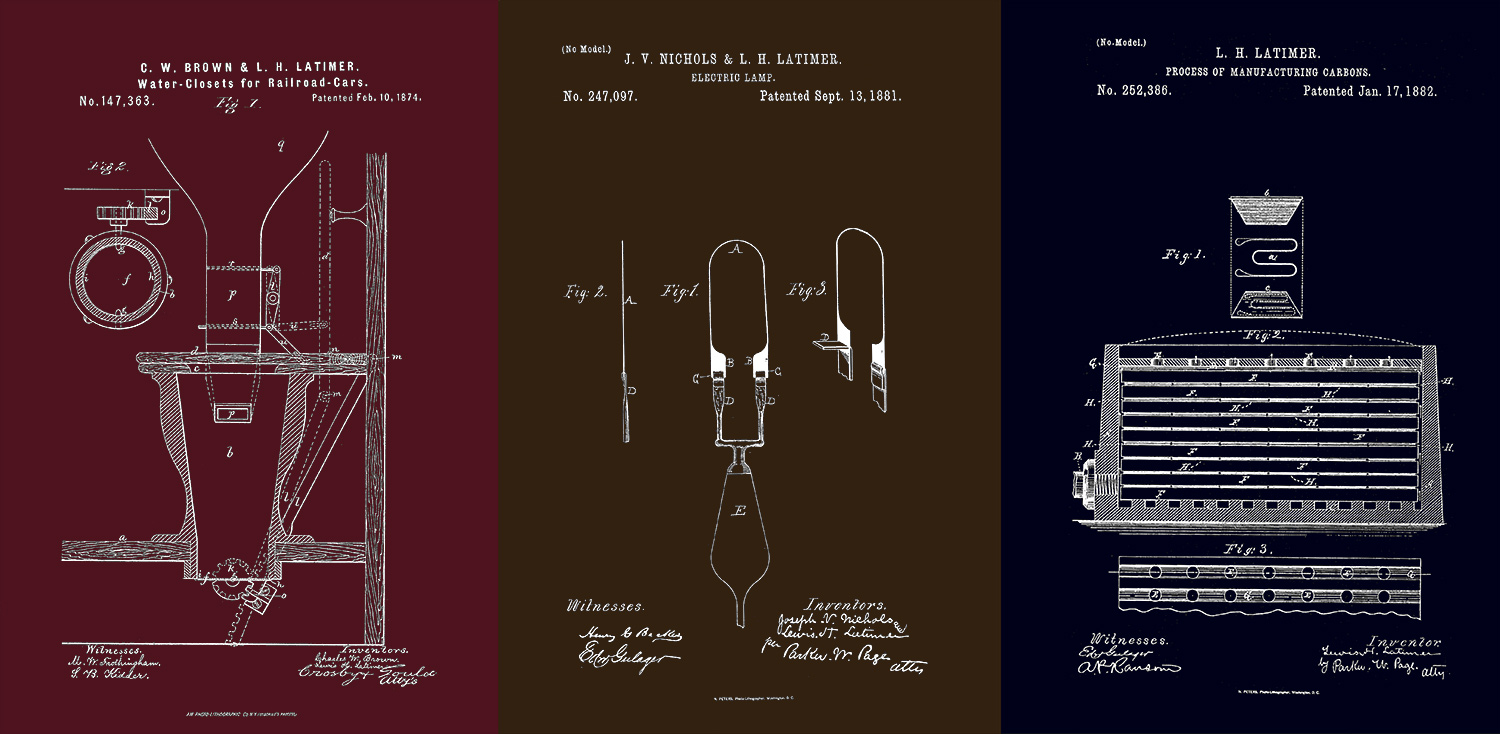
Patent drawings for three of Lewis Latimer’s inventions, including a water closet for railroad cars, a lamp fixture, and part of the process manufacturing carbons.
During the next decade, Latimer used his growing set of skills to sketch and draft his own patents as well as those of other famous inventors. In 1874, Latimer filed his first patent, an improved toilet system on railroad cars (U.S. Patent No. 147,363), along with Charles W. Brown. Two years later, he played an important role in helping another fellow innovator — Alexander Graham Bell — patent his invention.
Bell hired Latimer to draw plans for his new invention — the telephone. Latimer often worked deep into the night, providing Bell detailed and precise drawings. Bell filed his telephone patent mere hours before his main competitor on February 14, 1876.
This high-profile achievement earned Latimer the opportunity to join the ranks of U.S. innovators on the cutting edge of technology. In 1880, he was hired as an assistant manager and mechanical draftsman for inventor Hiram Maxim, who founded the U.S. Electric Lighting Company. There, he worked with lamps and bulbs and supervised the installation and production of the company’s equipment in cities around the U.S., Canada, and Great Britain.
Latimer also educated himself in the increasingly competitive field of electric lighting. That same year, Thomas Edison received a patent for the first electric light bulb in the U.S. — a historic technological feat still celebrated today. However, the filament inside Edison’s bulb didn’t last very long — a few days at most — rendering it impractical for everyday use. Many inventors set about trying to find a solution, Latimer among them. In 1881, the draftsman-turned-inventor achieved a breakthrough and unveiled his most famous innovation — a method of manufacturing a carbon filament, which enabled Maxim's bulbs to be mass produced.
“Rayvon Fouche, the author of Black Inventors in the Age of Segregation, wrote that a filament treated with Maxim’s process burned longer than the one in an Edison lamp. This made it more affordable and practical for everyday use by ordinary people,” Price said.
"Like the light of the sun, it beautifies all things on which it shines, and is no less welcome in the palace than in the humblest home."
Latimer, however, didn’t receive the esteem nor the right to claim the financial benefits of his work, Price said. Maxim had the legal right to his employees’ patents and took credit for Latimer’s invention. The “Maxim Lamp” was the first to use Latimer’s carbon filaments.
“[Latimer] understood the way this worked when he was with Maxim,” Price continued. “I think he got it. I mean, at some points in time in American history, if your boss claims credit for your invention, you might quit. He didn't do that. He swallowed hard and came up with his own invention in his own name.”
In 1882, Latimer obtained a carbon filament patent in his own name — “Process of Manufacturing Carbons” (U.S. Patent No. 252,386). His process involved wrapping carbon filaments for bulbs in cardboard envelopes that reduced the common breakages during production. Innovations such as these not only further extended the usage of the filaments, but it also caught the attention of arguably the most famous inventor of that era.
Edison, Maxim’s main rival in electrical lighting, recruited this young, rising innovative star to work for him. Using his expertise in patent drafting and electrical engineering, Latimer was instrumental in assisting Edison with the patent approval process with the U.S. Patent Office. As Edison’s patent investigator and expert witness, Latimer also helped protect Edison’s company from patent infringements both in the U.S. and overseas. Although Price said many workers resented having a Black man supervise their work, Latimer’s level of technical prowess, responsibility, and experience was unprecedented for a Black man in that era.
“It is fascinating about him, but it's also fascinating about Edison, Maxim, and Bell that they were at peace with having a Black man in their midst and relying on his expertise,” Price said. “That was very unusual.”
Another unusual achievement was Latimer’s book “Incandescent Electric Lighting – A Practical Description of The Edison System,” published in 1890. Edison encouraged him to write the piece, which explained how light is generated from an incandescent lamp in plain language. It sparked a lot of interest, even among readers who didn’t have a scientific background.
Latimer’s own incandescent brain brought other patents to light as well. One was a precursor to the air conditioner in 1886 called the “Apparatus for cooling and disinfecting,” (No. 334,078). His final patent, No. 968,787, for a lamp fixture, was approved in 1910.
In addition to his noteworthy inventions, Latimer pioneered new paths as a Black man who ran significant business operations for his employers in major U.S. cities and internationally, namely Canada and Great Britain. He was the only Black man of 28 individuals inducted into the initial class of Edison Pioneers, an achievement that Price likens to a “hall of fame” for Edison's colleagues who were leaders in the lighting industry.
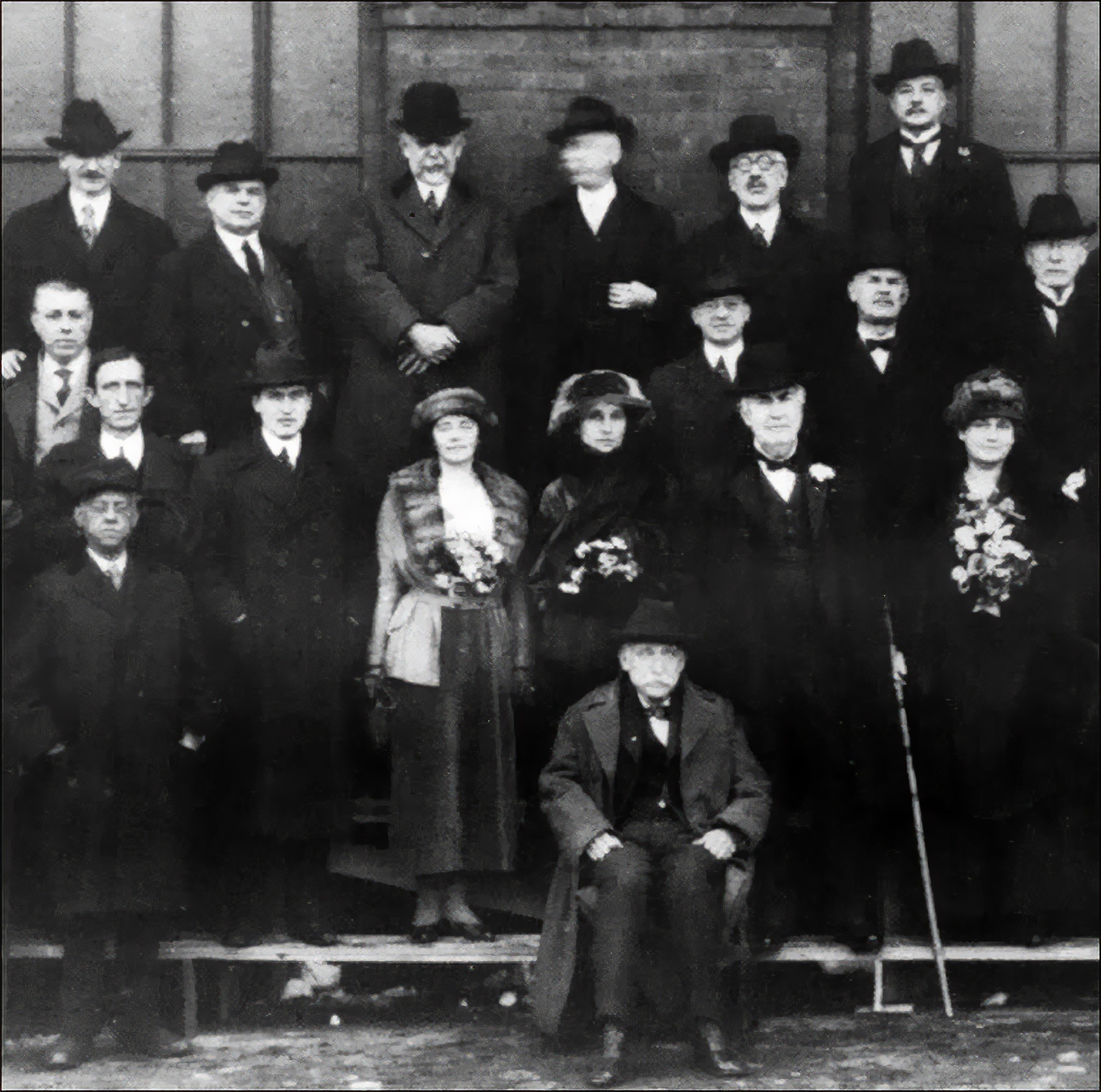
Lewis Latimer, lower left, and Thomas Edison, standing with cane, pose with other members of the Edison Pioneers in 1920. The group consisted of employees who worked with Edison earlier in his career.
(Courtesy of Lewis Latimer House Museum)
“He climbed up the ranks while quietly shattering glass ceilings in the mainstream business world along the way,” Price said. “When you look at the career trajectory, he was always looking beyond the immediate confines of what he had been hired to do and figuring out how else he could add value to the organization and find fulfillment.”
Ran Yan, the director of the Lewis Latimer House Museum in Flushing, New York, noted that Latimer’s wife, Mary, and daughters Jeanette and Louise, were also intellectuals, which is even more remarkable since Black women had fewer career opportunities than Black men did during that period. Yan noted that Jeanette studied at the predecessor of Juilliard, and Louise studied at Pratt Institute in New York — formal education that Lewis Latimer had not been able to obtain.
“At the time, a lot of Black women only had access to professions such as seamstresses or house cleaners, but his wife, Mary, was intellectual and educated, (and) had learned how to write (when growing up),” Yan said.
Despite the lack of a formal education, Latimer never allowed that to slow him down. Described as “very much a gentleman of that Victorian period,” by Yan, Latimer taught himself enough French to complete a lighting project in Montreal and also immersed himself in the humanities.
“He was versed in music and poetry. He wrote poems,” she said. “He enjoyed playing music. He also wrote plays. He had a very full life in terms of having different interests in the arts outside his job as a draftsman, inventor, and patent expert.”
Having overcome racist perceptions while quietly shattering ceilings in the business world during this career, Latimer would spend his twilight years focusing on expanding educational opportunities like those afforded to his daughters and increasing employment options for the Black population and other minority groups as a community and civil rights activist.
He taught mechanical drawing and English to immigrants at the Henry Street Settlement, a neighborhood-focused social services organization in New York. Latimer was also instrumental in supporting the White Rose Mission, a place for young Black women to learn job skills who had been lured to New York with false promises of employment by scam artists. His years of advocacy for equality and increased opportunities for the Black community garnered the attention of civil rights leader and close friend Booker T. Washington, who invited him to the 1895 National Conference of Colored Men. While Latimer did not attend in person, he sent this message to the conference:
“If our cause be made the common cause, and all our claims and demands be founded on justice and humanity, recognizing that we must wrong no man in winning our rights, I have faith to believe that the Nation will respond to our plea for equality before the law, security under the law, and an opportunity, by and through maintenance of the law, to enjoy with our fellow citizens of all races and complexions the blessings guaranteed us under the Constitution.”
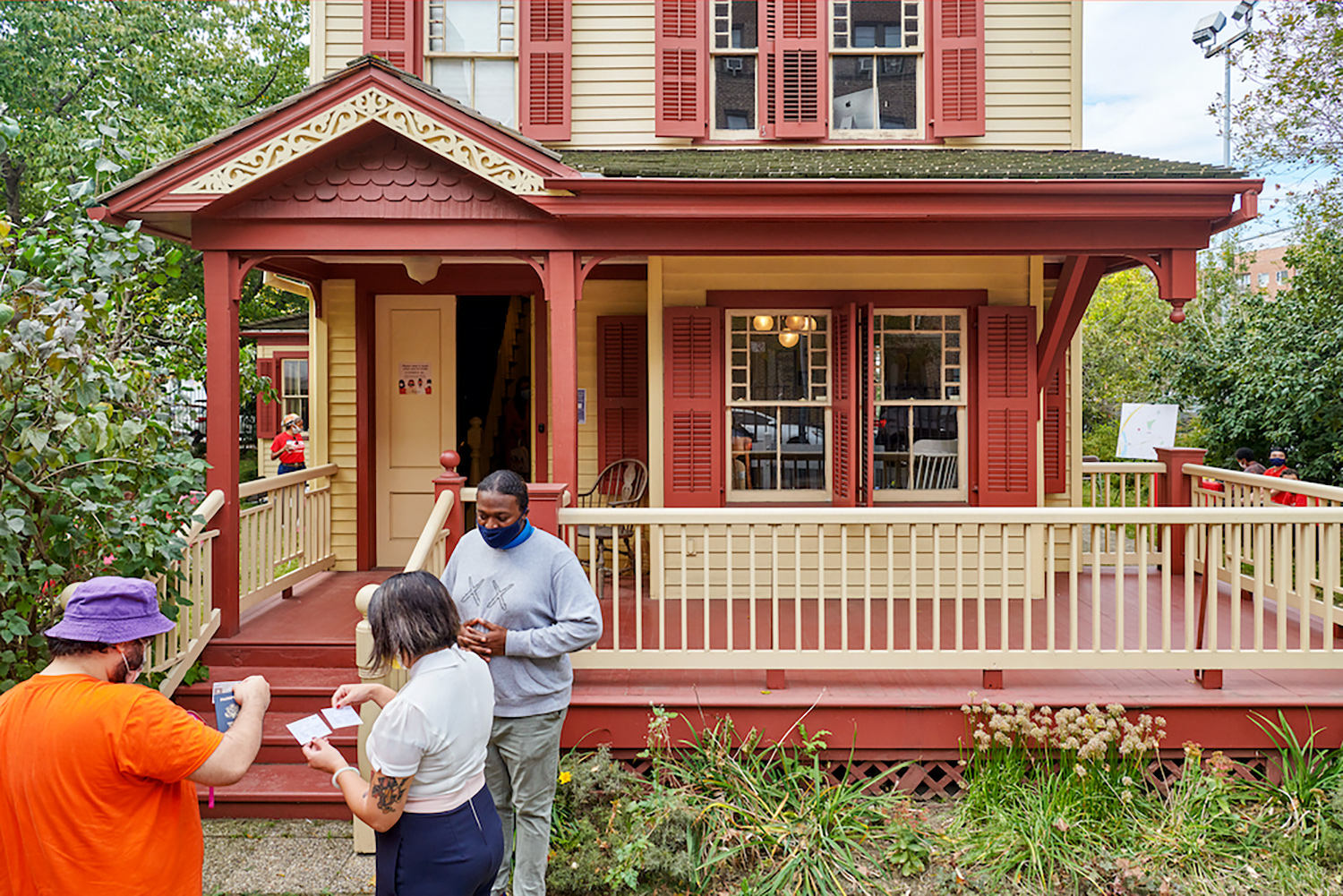
A docent greets two visitors to the Lewis Latimer House Museum in Flushing, New York. The house, built in the early 1900s, contains many letters, drawings, innovations, and personal items of Latimer and other Black innovators.
(Photo by Kelly Marshall)
He continued to work as a patent consultant, helping others make their ideas into reality, until failing eyesight forced him to retire in 1922. Latimer died December 11, 1928, at age 80 in Flushing, New York, four years after Mary passed.
Nearly a century after Latimer’s death, Price and Yan help keep the inventor’s legacy alive under their leadership at the Lewis Latimer House Museum. Established in 1998, the museum highlights the accomplishments of Lewis Latimer and other innovators of color through cultural programs, and science, technology, education, arts, and mathematics (STEAM) programs.
“Our mission is to tell his story; to engage everyone to learn about this important history, especially because people like Lewis Latimer — and their contributions to science and technology throughout American history — have often been overlooked,” Yan said in an interview with Simons Foundation in 2022.
Born and raised in Washington, D.C., Price admits he didn’t know a whole lot about his innovative ancestor either, although he did stay with Latimer's daughter Louise, who lived in the family house that is now the museum during the 1950s and 1960s.
“Aunt Louise put me up in the front bedroom. I may have even slept in his bed,” Price said. “And Aunt Louise would always say to me, ‘I'd like for you to come down to breakfast tomorrow morning, and I'm going to tell you all about your famous uncle Lewis Latimer and about his famous parents, the fugitive slaves.'"
Initially, Price declined invitations to join the museum’s board from relatives and acquaintances, but he agreed to join after retirement. Now he and Yan work to shine a light on the man who routinely deflected that to others.
Although he worked side-by-side for decades with men like Edison and Maxim, who sought fame for their innovations, Yan said Latimer spurned the spotlight.
“The reality is any invention is developed over a long period of time, through multiple iterations with contribution from many different people,” she said. “And then in that process, oftentimes people like Latimer don't get credit for what they've done in order for the whole process to happen and [be] complete[d].”
“I think he viewed it as for the greater good,” Yan continued. “I'm sure he and his family members were very proud of his achievements, but I didn't get the sense that he was doing it for personal credits or financial gains or fame.”
Price agrees, noting Latimer was very much an activist, but he was an activist working inside the system “on a part of the continuum between Booker T. Washington and W.E.B. Du Bois” that focused on economic self-sufficiency, survival, and breaking down barriers internally.
“My audacious hope is that when we the American people turn on a light switch, we think of Lewis Latimer,” Price said. “And better yet, that we thank him for his historic role in bringing light into our lives.”
Credits
Produced by the USPTO’s Office of the Chief Communications Officer. Feedback can be sent to inventorstories@uspto.gov.
Story by Bill Lincicome. Additional contributions from Jon Abboud, Whitney Pandil-Eaton, Rebekah Oakes, and Leah Taber. Special thanks to Hugh Price and Ran Yan.
The Lewis Latimer quote midway through the story is taken from his book “Incandescent Electrical Lighting: A Practical Description of The Edison System.”
References
Davis, Asa J. “The George Latimer Case.” https://edison.rutgers.edu/resources/latimer/the-george-latimer-case
Fouché, Rayvon. Black Inventors in the Age of Segregation: Granville T. Woods, Lewis H. Latimer, and Shelby Davidson. Baltimore: Johns Hopkins University Press, 2004.
George, Luvenia. “Innovative Lives: Lewis Latimer (1848-1928): Renaissance Man” Lemelson Center for the Study of Invention and Innovation. February 1, 1999. https://invention.si.edu/innovative-lives-lewis-latimer-1848-1928-renaissance-man
Latimer, Lewis, Field, C.J., and Howell, John White. “Incandescent electric lighting. A Practical Description of The Edison System. 1890.
Lewis Latimer House Museum. “About Us: History.” https://www.lewislatimerhouse.org/about
“Lewis Latimer.” Black Inventor Online Museum. 2010. https:/www.blackinventor.com/lewis-latimer/
Maxim, Hiram. My Life. Methuen & Co. Ltd.,
Price, Hugh. Interview by Bill Lincicome. December 7, 2023.
Price, Hugh. “Lewis Latimer: The Son of Fugitive Slaves Who Became a STEM/STEAM Trailblazer” Speech delivered April 10, 2023.
Vera, Omar. “Interview: Ran Yan from the Lewis Latimer House Museum.” Science Sandbox. September 8, 2022.
Thomas A. Edison Papers. Rutgers School of Arts and Sciences. Rutgers University, 2022. https://www.simonsfoundation.org/2022/09/08/interview-ran-yan-from-the-lewis-latimer-house-museum
Singer, Bayla. “Inventing a Better Life: Latimer’s Technical Career.”
Thomas A. Edison Papers. Rutgers School of Arts and Sciences. Rutgers University, 2022. https://edison.rutgers.edu/resources/latimer/inventing-a-better-life-latimer-s-technical-career
Yan, Ran. Interview by Bill Lincicome. December 5, 2023.



